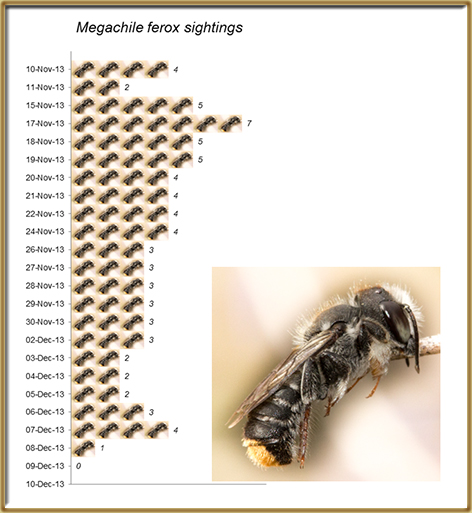Nest building under way in our 'bee hotels'
/The last month has seen an exponential increase in both the number of native bee species we're seeing here, as well as the numbers of individuals for each of those species. What's more, our 'bee hotels' are proving quite popular this season. Though spotting and identifying species as they fly in and out continues to be tricky.
Lucky for me, I happened to be around when some of them were completing their nests. With solitary bees, the female creates her nest (in this case, in one of the drilled holes), provisions it with an egg and pollen, then seals it up. While she's working on the sealing stage is a great opportunity to observe her work.
To give you a sense of scale, in the video below, the hole this bee is working in is about 5mm in diameter. The timber was an offcut from an olive tree and it's in the newest of our bee hotels. Yes, we have more than one!
Video:Native bee building her nest in a "bee hotel"
I uploaded this little clip to BowerBird.org.au, along with some additional photos that showed the finished nest, complete with some sticks or grass used in the outer layers. Ken Walker confirmed this bee is Megachile ferox ... which is the same species you might recall I'd observed some males of "scuffling" not far from our place last month.
You can see this Bowerbird listing at http://www.bowerbird.org.au/observations/10793.
Or to see all our posts about bee hotels click here.
What about the males I noticed in November?
I am a bit sad to say the male Megachile ferox along the walkway have now moved on. I checked on them most evenings and noted their numbers. (As you do! I'll also mention I met some wonderful people during this process; and I am pretty sure I freaked out equally as many, when they came across me seemingly staring at nothing beside the walkway, often at dusk or after dark!). During the day these bees would go and do whatever it is they do (forage? look for females?). Then in the late afternoon or evening they would return, not only to the same Dianella (aka flax lily), but even to the same couple of branches on that particular plant.
Their numbers varied a bit. Here's a chart. It's a bit small to see but I've used the bees as the units - one bee photo equals one bee spotted that evening ... ok, you can stop rolling your eyes now!

Image: number of male Megachile ferox seen on the one particular Dianella plant, by date.
When he identified these bees from my earlier video, Dr Walker suggested these males would have chosen that spot for its proximity to the female bees. It certainly seemed a good choice. It's somewhat protected by the surrounding infrastructure from strong wind and westerly sun, but with morning sun access, and other Dianellas nearby. However, it was also intriguing that they only came here, and not to any of the 30 or more other Dianella plants in the vicinity. And then, as you can see on the chart, they suddenly all stopped coming.
It was about three days after that, I first noticed a female (perhaps the one in the above video?) hanging out in the bee hotel.
Incidentally, other species of native bee have also been visiting this plant (and those around it) while it has flowered. And for the last couple of nights a female blue banded bee has spent the night resting there.
I wonder what will happen next?


